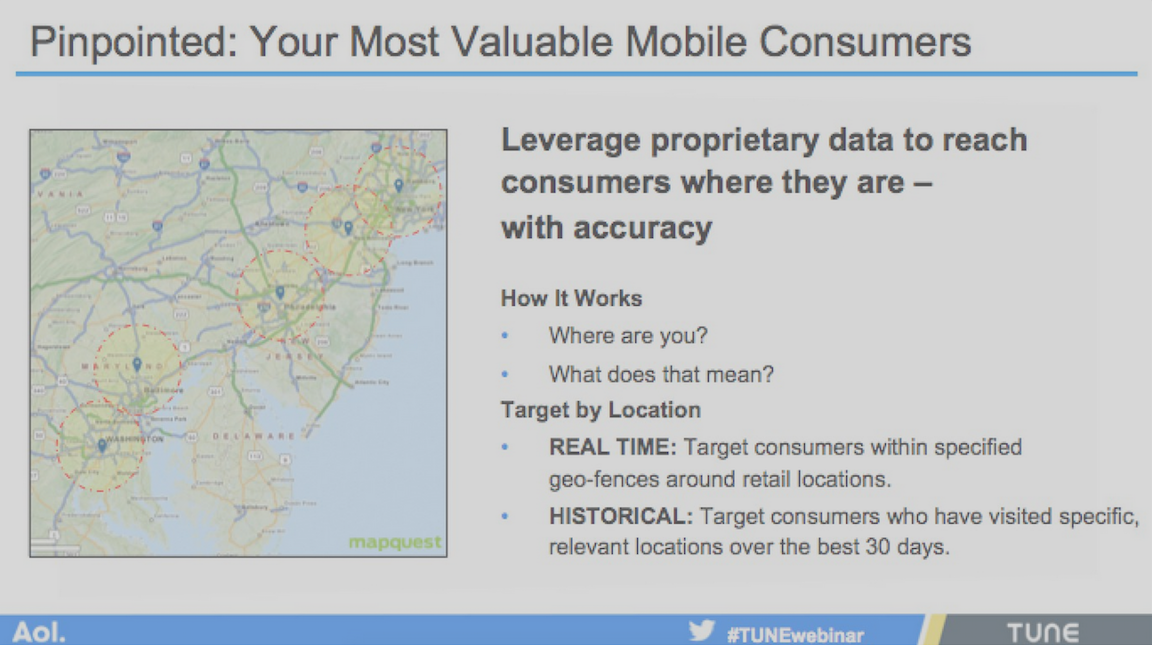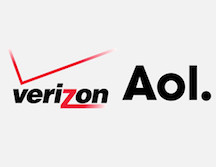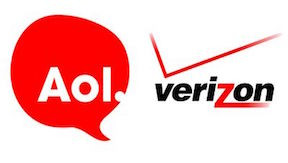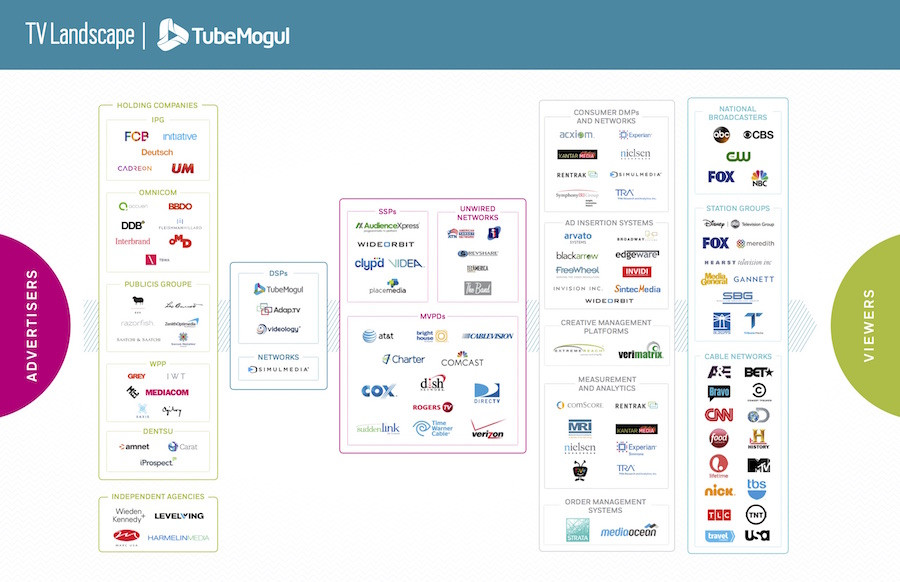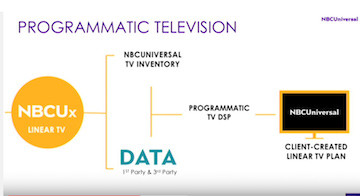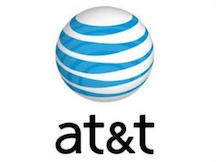Newsroom
Program Areas
-
Dear Chairman Upton and Ranking Member Pallone: We, the undersigned consumer and public interest groups, write regarding the “FTC Process and Transparency Reform Act of 2016,” a discussion draft advanced by the Subcommittee on Commerce, Manufacturing, and Trade to the full Committee that would alter the processes used by the Federal Trade Commission (FTC) to carry out its work. We are very concerned that the legislation would harm the FTC’s ability to crack down on scam artists and protect consumers from unfair, misleading, or anticompetitive business practices. Among other concerns, we are troubled that the legislation would: Thoroughly undermine the FTC’s enforcement capabilities. By allowing “[c]ompliance with any guidelines, general statement of policy, or similar guidance issued by the Commission” to be used as evidence of compliance with the law—rather than merely as evidence of a goodfaith effort to comply with the law—the legislation could thoroughly undermine the Commission’s enforcement of the FTC Act. A company that is the target of an enforcement action or subject to a consent order could hunt for and cite a wide variety of general statements by the agency to evade liability for violating the law. Under these circumstances, the FTC might have to rescind the guidance it has given to businesses and consumers, and stop giving new guidance, in order to preserve its enforcement capabilities. Constrain the FTC’s authority to find that a business practice is unfair. By casting in statutory concrete portions of the FTC’s 35yearold Policy Statement on Unfairness, but leaving out key context and references, the legislation would constrain and rigidify the agency’s authority to find that an act or practice is unfair. We are particularly concerned it would undermine the agency’s authority to find that an act or practice is unfair even though it may not directly cause physical effects, such as harassing late-night telephone calls. End investigations arbitrarily. By requiring the termination of any investigation after six months, unless the FTC sends the target of the investigation a written communication or votes to keep the investigation open, the legislation could result in critical investigations ending arbitrarily or their confidentiality being compromised. The FTC should have the flexibility to prioritize its time working on investigations in a manner consistent with the public interest, and to take the time necessary to determine how best to protect consumers. Weaken the FTC’s ability to prevent repeat offenses. By setting a shorter, eight-year standard length for FTC consent decrees, and requiring the FTC to justify continuing nonfraud decrees for more than five years, the legislation would weaken the FTC’s ability to prevent repeat offenses. The FTC can in most cases only fine a company—and thus penalize a repeat offense—for violating an order, not simply for recommitting the offense itself. The FTC’s work to promote competition and protect consumers from unfair or deceptive acts or practices is essential to the fair functioning of the marketplace. For over a century, the agency has stood up for the interests of consumers when threatened by unlawful behavior, such as predatory sales tactics, false advertising, price fixing, or abusive communications. The Commission—operating on a bipartisan basis and often via consensus—investigates consumer complaints and takes legal action as appropriate to stop illegal practices and deter others from engaging in them. As a result of these actions, consumers enjoy a far fairer, far more reasonable and dependable marketplace than otherwise would exist, and businesses operating fairly and honestly are rewarded with a more level playing field. We urge you not to report legislation to the full House that would undermine the FTC’s critical work. For any additional information, please contact William Wallace at Consumers Union, , 202-462-6262. Sincerely, Agriculture and Trade Policy Americans for Financial Reform Center for Democracy & Technology Center for Digital Democracy Center for Science in the Public Interest Common Sense Kids Action Constitutional Alliance Consumer Action Consumers for Auto Reliability and Safety Consumer Federation of America Consumer Federation of California Consumers Union Consumer Watchdog Families Rally for Emancipation and Empowerment Food & Water Watch Free Press Action Fund Funeral Consumers Alliance Georgia Watch Institute for Agriculture and Trade Policy (IATP) Knowledge Ecology International Massachusetts Consumers’ Council, Inc. Media Alliance National Association of Consumer Advocates National Consumer Law Center Privacy Times Public Citizen Public Good Law Center Public Health Advocacy Institute at Northeastern University School of Law U.S. PIRG Virginia Citizens Consumer Council Virginia Poverty Law Center World Privacy Forum
-
Today, most customers move between devices and channels with great fluidity. Customers may research a product on their mobile device, but go and complete a purchase on their desktop computer. According to research from CMO Club, 85% of marketers say their biggest challenge to providing seamless cross-channel marketing is customer data that is unavailable or spread across multiple sources. The Oracle ID Graph helps marketers connect identities across disparate marketing channels and devices to one customer. Powered by the Oracle Marketing Cloud (link is external) and Oracle Data Cloud (link is external), the Oracle ID Graph seamlessly pulls together the many IDs across marketing channels and devices that comprise a given person, enabling marketers to tie their interactions to an actionable customer profile. This ID enables the marketer to orchestrate a relevant, personalized experience for each individual across marketing channels. Get better Cross-Channel orchestration. Marketers have valuable data inside of their CRM, email marketing and marketing automation tools from Oracle’s Cross-Channel Marketing solutions. Through the Oracle ID Graph, customer data residing inside CRM, marketing automation or email systems can be onboarded securely and anonymously into the Oracle Data Management Platform. There, through integrations with media providers, marketers can deliver paid media, search, social and display advertising to those customers that’s more aligned with the emails sent to those customers. Improve Cross-Channel targeting. Many customers today prefer to research a potential purchase on one device, but purchase on another. With the Oracle ID Graph, customers are more likely to receive a relevant experiences as they move between these devices and connect with the right product or service. For example, if a customer uses a desktop browser to search for flights to New York, an airline marketer can ensure a relevant ad appears for a flight promotion when that same customer switches to their mobile device. This results in a higher conversion rate and more optimized budgets. --- For more information visit http://bit.ly/1HtID0o (link is external)
-
Blog
Consumer, Privacy Groups decry failure to protect consumer facial and biometric privacy by Commerce Department and industry lobbyists
Statement on NTIA Privacy Best Practice Recommendations for Commercial Facial Recognition Use
Alvaro Bedoya, Center for Digital Democracy, Common Sense Kids Action, Consumer Action, Consumer Federation of America, Consumer Watchdog, Privacy Rights Clearinghouse, and U.S. PIRG The “Privacy Best Practice Recommendations for Commercial Facial Recognition Use” that have finally emerged from the multistakeholder process convened by the National Telecommunications and Information Administration (NTIA) are not worthy of being described as “best practices.” In fact, they reaffirm the decision by consumer and privacy advocates to withdraw from the proceedings. In aiming to provide a “flexible and evolving approach to the use of facial recognition technology” they provide scant guidance for businesses and no real protection for individuals, and make a mockery of the Fair Information Practice Principles on which they claim to be grounded. That is not surprising. It was clear to those of us who participated in this process that it was dominated by commercial interests and that we could not reach consensus on even the most fundamental question of whether individuals should be asked for consent for their images to be collected and used for purposes of facial recognition. Under these “best practices,” consumers have no say. Instead, those who follow these recommendations are merely “encouraged” to “consider” issues such as voluntary or involuntary enrollment, whether the facial template data could be used to determine a person’s eligibility for things such as employment, healthcare, credit, housing or employment, the risks and harms that the process may impose on enrollees, and consumers’ reasonable expectations. No suggestions are provided, however, for how to evaluate and deal with those issues. If entities use facial recognition technology to identify individuals, they are “encouraged” to provide those individuals the opportunity to control the sharing of their facial template data – but only for sharing with unaffiliated third parties that don’t already have the data, and “control” is not defined. Just as there is nothing that “encourages,” let alone requires, asking individuals for consent for their images to be collected and used for facial recognition in the first place, there is nothing that “encourages” offering them the ability to review, correct or delete their facial template data later. The recommendations merely “encourage” entities to disclose to individuals that they have that ability, if in fact they do. Further, if facial recognition is being used to target specific marketing to, for example, groups of young children, there is no “encouragement” to follow even these weak principles. There is much more lacking in these “best practices,” but there is one good thing: this document helps to make the case for why we need to enact laws and regulations to protect our privacy. If this is the “best” that businesses can do to address the privacy implications of collecting and using one of the most intimate types of individuals’ personal data – their facial images – it falls so short that it cannot be taken seriously and it demonstrates the ineffectiveness of the NTIA multistakeholder process. -
AOL is assimilating Verizon’s and Microsoft’s most valuable consumer data by the end of the year to give marketers more advanced targeting potential to up to 500 million users, according to AOL Platform’s CTO Seth Demsey. The newly formed advertising triumvirate of Verizon, AOL and Microsoft will be built on a foundation of data that many think could be a viable third option behind Facebook and Google in terms of reach and targeting potential. By the end of the year, AOL will have its data platform running, and it will access key user information — first-party data on Verizon customers and Microsoft users — for brands to use for highly targeted ad campaigns, Demsey said. “It’s a different ballgame because of the level of depth of the relationship Verizon has with customers,” Demsey said. “We know things like addresses, credit cards, phone numbers.” These are “real, authenticated people,” which has a big impact on being able to measure the effectiveness of ads, he said. Verizon bought AOL earlier this year for $4.4 billion, and one of the most important steps of the merger is to combine the ad technology of both platforms. Verizon is integrating a program called Precision Market Insights into AOL’s recently transformed ad platform, called AOL One. “That is huge,” said Sean Black, SapientNitro’s North America media services lead. “You can’t even begin to assume the amount of data Verizon has between its wireless network and broadcast TV with FIOS.” AOL also said that Microsoft’s proprietary data would be entered into its domain as well. Verizon has been making changes to its precision marketing program (link is external) since it bought AOL, and sources have said it will operate more like a “walled garden,” which means it would tightly control how brands and advertisers can leverage its valuable data, especially through third parties. Verizon Wireless has more than 100 million subscribers, and its FIOS Internet and TV service runs to about 7 million households. Those Verizon customers are just the start of the reach of the new advertising ecosystem that is taking shape. Verizon also bought Millennial Media, a mobile ad network with hooks in 65,000 apps. In all, AOL is now claiming that it can reach 500 million users, which is up from before the deal when the company touted 100 million users. AOL is giving advertisers the lay of the land like this: “We’re not just looking at digital display advertising,” Demsey said. “We’re looking at video, looking at mobile, looking at social, search, linear TV, over-the-top [digital TV].” --- For more information visit http://bit.ly/1LxXwDD (link is external)
-
New York – May 16, 2016 – SintecMedia today announced that OnBoard, the industry leading programmatic platform, will be fully integrated with HighYield, a programmatic tech ad platform from Visible World, a Comcast Platform Services company. This deal will allow SintecMedia‘s network customers utilizing OnBoard to expand ad sales offerings from traditional, unit-based products into innovative, audience-based products that span TV & digital platforms and enable High Yield customers to benefit from a valuable inventory to be offered via networks using OnBoard. The combination of SintecMedia‘s OnBoard with Visible World‘s HighYield will easily enable OnBoard clients to selectively provide their TV ad inventory to Programmatic TV selling via users of the HighYield platform, including Programmatic TV leader AudienceXpress, as well as established agency media buying systems such as Strata. OnBoard’s efficient, end-to-end trading process integrates internal sales and fulfillment systems with intelligent work-flow automation for coordinating teams, departments and buyers. Together, these platforms will unleash undervalued inventory making them more broadly available for Programmatic TV selling using advanced audience data and allowing buyers and sellers to realize additional incremental value. “For the first time, our clients have the tools to maximize the promise of Programmatic Ad Sales. With OnBoard, the entire ad sales ecosystem is connected and communicating to bring new revenue opportunities in an efficient, real-time application, “ said Amotz Yarden, CEO, SintecMedia. ”Bringing together OnBoard with HighYield and Strata is another step in providing our clients with the most complete, robust platform for maximizing their ad sales business.” The CEO of Visible Word, Seth Haberman, added “By integrating HighYield platform with SintecMedia, we are making it possible for broadcasters to make it easy to benefit from the growth in demand for Programmatic TV advertising .” --- For more information visit http://bit.ly/1rlGNu3 (link is external)
-
Blog
AT&T: See databrokers they use in attached doc. "Best Practices"
How to optimize results on this groundbreaking platform
Addressable TV was launched in 2012 by DIRECTV. Multi Video Program Distributors (MVPDs), such as DIRECTV, are currently the only entities offering true Addressable TV due to required access of both the video distribution system and data center. MVPDs offer Addressable TV in the ad breaks they receive from program networks, such as ESPN and CNN, as part of their carriage agreements. Currently, four MVPDs (DIRECTV, DISH, Comcast, and Cablevision) offer Addressable TV and that footprint is set to grow to 40 million households by end of year1. With AT&T’s acquisition of DIRECTV in 2015, AT&T AdWorks now has the largest national addressable platform, offering Addressable TV advertising across nearly 13 million DIRECTV households out of the 26 million combined DIRECTV and U-verse TV households. In a recent study conducted by Adweek and AT&T AdWorks, a survey of leading marketers indicated that current TV buying (without addressability) isn’t meeting marketing needs and there is both frustration and a desire to reach relevant audiences more effectively. Nearly all respondents agree that there is too much waste associated with TV and that traditional methods of measurement are outdated. As a result, over 80% are shifting TV dollars into digital for greater accountability and effectiveness. However, nearly all agree that TV would be more attractive if they “could target more finely.” As the leader in Addressable TV, AT&T AdWorks has run hundreds of campaigns across a wide array of advertisers and verticals. The purpose of this white paper is to share the learnings from those experiences to inform future campaigns and advertisers – and to demonstrate that TV still remains the most impactful advertising medium made even more effective by addressability. --- For more information, see the AT&T White Paper PDF. -
In the Matter of Petition of Public Knowledge, Center for Digital Democracy, Consumer Watchdog, Consumer Federation of America, and TURN —The Utility Reform Network Introduction: 47 U.S.C. §551 and 47 U.S.C. § 338(i) (collectively referred to as “privacy rules”) require that cable and satellite providers (herein referred to as “cable operators”) obtain the “written or electronic consent of the subscriber concerned” prior to the collection and use of that information for advertising purposes. Cable operators are also required to provide a written statement to their subscribers, which clearly and conspicuously informs the subscriber of the nature of the use of their personally identifiable information. Through these rules, Congress and the Federal Communications Commission have emphasized the importance of giving consumer’s control over how their information is being used. Despite this, cable operators have continued to use large amounts of their customers’ data without properly obtaining customer consent or informing subscribers of the extent of the use of their information. The Commission should enforce the relevant privacy provisions to ensure that cable operators only use subscriber information when they have the consent required by law. Cable Operators Collect and Share Large Amounts of Customer Data to Generate Targeted Advertising. The use of consumer data to target consumers for advertising is on the rise. Exactly how and to what extent cable operators are leveraging their customer’s data has been extensively documented in a recent report by the Center for Digital Democracy. Cable operators increasingly gather their customers’ personal information, share and combine that information with third parties, and use it to target customers for advertising on an individual level. Verizon, Comcast, Google, AT&T, Time Warner, Cablevision and others have incorporated powerful layers of data collection and digital marketing technologies to better target individuals. AT&T’s TV Blueprint, for example, “gives advertisers working with AT&T the ability to reach people based on factors like device, operating system, whether or not they’re heavy data users or the status of their carrier contract,” using “sophisticated second-by-second set- top box data” and other information. AT&T pulls data “from millions of set-top boxes” and analyzes consumer viewing history and uses these data to target consumers based on their viewing profile. Companies like Cablevision leverage granular data and precise details of household viewing behavior, and combine it with third-party data covering other intimate details of consumers’ lives to analyze and target specific individuals with video advertising across a range of screens. In their own words, “this set-top box level targeting lets marketers target customers that fit particular trends, profiles, demographics and attributes, and they can also pair the Cablevision data with their own or third-party data.” Cablevision and AT&T are not alone in their pervasive use of consumer data. Comcast recently acquired Visible World, which boasts of using data “from millions of enabled Smart TVs” as part of its advertising targeting service. Data points used to target consumers include income, ethnicity, education level, what kind of car they drive, purchase history, and location of their residence. Further, Comcast has acquired companies like This Technology, which is capable of inserting personalized content into network streams—including advertising messages tailored for specific individuals. These programs illustrate how cable providers give advertisers the ability to easily access and use a customer’s information, without that customer knowing the extent to which that information is being used. While these practices are broadly indicative of the ways many cable operators improperly use subscriber data, AT&T, Cablevision, and Comcast are among the most egregious. The Commission should investigate these practices and find that they violate the privacy rules. --- Full filed complaint attached below.
-
AT&T AdWorks provides an intelligent feedback loop helping you quickly recognize, measure, and evaluate a customer’s needs as they journey from prospect to buyer down the sales funnel. From top-level activities such as driving brand awareness and measuring brand health, to mid-funnel activities like reaching viewers on multiple forms of media, AT&T AdWorks can help you engage and interact with your customers at each stage – transitioning them closer to purchase. Addressable Case Studies Whether you are looking to drive sales lift or ROI, grow brand awareness or measure effectiveness of a campaign we can provide that accountability with proven results across all categories. Healthy-living CPG company (link is external) Leading Luxury Automaker (link is external) Travel and Hospitality (link is external) Finance and Banking (link is external) Insurance Carrier (link is external) Popular TV Show (link is external) --- For the full article, visit http://soc.att.com/1UwSkhE (link is external)
-
Blog
AT&T AdWorks Announces Results of Cross-screen Addressable Advertising Trials with Advertisers
AT&T AdWorks and Opera Mediaworks Connected Walmart, AT&T and Other Advertising Trial Participants With their Target Consumers Across TV and Mobile
The results are in. AT&T1 AdWorks, the nationwide leader in addressable TV advertising, conducted a series of cross-screen addressable2 TV and mobile advertising trials with multiple Fortune 100 companies including Walmart and AT&T. We conducted the trials in collaboration with Opera Mediaworks, one of the world's largest mobile advertising and marketing platforms, so advertisers could reach their target audiences across TV and mobile devices. Advertisers were able to measure results on a variety of key performance indicators from brand/message favorability to sales. "These results show the immense value of cross-screen addressable advertising. They also display our innovative audience targeting and measurement capabilities across screens," said Rick Welday, president, AT&T AdWorks. "We can deliver ads to a brand's target audience. And we can measure how addressable advertising performs across platforms. This is a huge opportunity for brands." AT&T Mobility We tested the impact of cross-screen addressable advertising on our own products and services. We served addressable ads for AT&T's mobility service and measured the effect addressable advertising had on bringing in new customers. We delivered these ads to a subset of DIRECTVcustomers who did not have an AT&T mobility service registered at the same address. Our addressable TV advertising results showed a 19% lift in sales. There was an additional lift in sales to nearly 27% when a consumer received the same addressable ad on both their TV and mobile devices.3 Walmart The cross-screen addressable advertising trial for Walmart targeted a custom audience, and held out a control group. When comparing treatment and control groups, the cross-screen addressable campaign showed a statistically significant lift in both brand and message favorability. Luxury Automotive Manufacturer The luxury auto campaign focused on driving sales for a specific high-end model. We targeted households anonymously identified as in the market for a luxury car. Through the trial we saw an 87% lift in sales for the luxury model among households that saw the addressable ad on both TV and mobile.4 Cross-screen addressable advertising is changing the way advertisers connect with audiences. AT&T AdWorks can help advertisers reach the right consumer with the right message. And advertisers can reach consumers on the right device when they are most interested in engaging with the brand. --- For the full article, visit http://prn.to/1UB9ldh (link is external) -
Our industry-leading tech & data platforms empower publishers & marketers to transact transparently at scale, reaching audiences across the entire mobile ecosystem. We offer a full range of managed services & programmatic solutions, including an open exchange, private marketplaces & direct buys. 9b+ Ad Requests Per Day 20+ 3rd Party Data Partner Integrations 65k+ Apps & Sites on Our Platform ONE by AOL: Mobile We simplify a complex mobile advertising ecosystem by seamlessly connecting marketers, publishers & developers Mobile Ad Exchange Exchange Millions of impressions are bought & sold each day on our exchange; that's programmatic at scale --- For more information, visit http://bit.ly/1r2LNDz (link is external)
-
CDD Calls on FCC to Protect Consumer Privacy on Broadband Networks
Comments show ISP "Big Data" techniques used to target consumers and discusses limited capabilities of FTC
The Center for Digital Democracy (CDD), a nonprofit organization representing the interests of consumers in the digital marketplace, strongly supports the Federal Communication Commission’s (FCC) proposal to empower individuals to make effective decisions regarding their privacy on broadband networks. Broadband Internet access service (BIAS) plays a powerful and distinctive role in the commercial digital media marketplace, requiring precisely the set of sensible safeguards offered by the Notice of Proposed Rulemaking (NPRM). CDD believes it is entirely necessary and consistent with the Communications Act that the commission extend longstanding consumer-protection policies for the telephone network into the modern broadband context. The role of the network in the broadband marketplace has a distinct purpose compared to so-called “edge” content providers: to facilitate a fairly managed and efficient connection between the subscriber/consumer and the content and/or services of their choice. Given their network-management role, BIAS providers have unique capabilities in terms of monitoring the communications and activities of their subscribers, enabling the capture and use of an extensive array of personal and other consumer information. Positioned by necessity at the center of subscribers’ wireline or wireless broadband use, and holding a “digital key” that can help analyze much of their users’ digitally connected behaviors, BIAS providers have unlimited opportunities to influence the decisions consumers make via data-collection-related applications and services. Consumers today confront a far-reaching and largely invisible data-gathering apparatus that tracks and analyzes their every move online. For example, as the FTC has acknowledged, the growth of cross-device tracking, enabling the identification of a particular consumer’s use of personal computers, mobile phones, tablets, and increasingly even television, and combining multiple sources of data for the development of a targeting profile, illustrates how recent advances in digital data collection pose growing threats to consumer privacy. Indeed, the journal of the Association of National Advertisers explained just last month, “cross-device marketing … allows unprecedented access to individual consumers via personal or shared household devices. … Data-driven cross-device marketers gain exclusive access to a slew of advantageous marketing enhancements, including consistent messaging across all devices … .” Leading BIAS providers promise such cross-device targeting capabilities. Lacking the ability to enact regulations to protect privacy (except for children 12 and under), the FTC has been powerless to ensure consumer protection from cross-device tracking practices, let alone from the growing myriad of practices that gather consumer data from social media, mobile app, online video usage, programmatic targeting, and many other practices. Without the authority to issue regulations on privacy-related matters connected to consumer financial services, for example, the FTC has been forced to rely on its Section 5 authority related to unfair and deceptive practices. In practical terms, this has enabled the digital-data industry to recognize that there are no real constraints to their rapidly expanding collection, analysis, and use of consumer data. The FTC has long recognized that its inability to issue regulations has placed the agency at a serious disadvantage, and has called for the enactment of new regulatory authority. For example, as former FTC Chairman Jon Leibowitz testified before Congress in 2009, in order for the agency “to perform a greater and more effective role protecting consumers … changes in the law and additional authority to promulgate needed rules …” are required. As CDD explained in its March 2016 report on the growth of digital data gathering by leading ISPs (and filed separately in this proceeding), companies such as ATT, Comcast, Verizon, Cablevision, and Charter have made significant investments in their ability to capture, process, and take advantage of a consumer’s information across all the devices they use daily. They are using cloud- and IP-based management systems to deliver data-connected advertising and marketing; have invested in or allied with real-time programmatic marketing technologies that, in milliseconds, make personalized ad-related decisions on which consumers to target and for what product; and have acquired numerous companies that strengthen their hold and use of consumer information, including data gathered by their consumers’ use of apps, online video, and mobile phones... Key characteristics of the BIAS data collection apparatus include: [see attached comments for full submission] -
Verizon uses Oracle Marketing Cloud to achieve massive scale through automated communications triggered by customer behaviors when interacting with this broadband and communications company. --- Create Cross-Channel Customer Experiences with Oracle Responsys It’s easy to make data from disparate sources useful, create precisely targeted audiences, and then empower customers to determine their own next experience by interacting with them in near real-time. Oracle Responsys empowers marketing teams with the tools to deliver the relevant, engaging experiences their customers demand across devices, channels, and lifecycles. How does Oracle Cross-Channel Orchestration help digital marketers manage cross-channel experiences? Oracle helps marketers design cross-channel customer experiences that are personalized and sophisticated. With one powerful yet easy to use platform, Oracle brings deeply integrated, best-in-class technologies and industry-leading insights together to help marketers realize their goals. What makes Cross-Channel Orchestration different than the other platforms? Oracle delivers innovative features that matter to marketers, is supported by unparalleled infrastructure, and provides unique solutions that yield incredible—and incredibly achievable—results. --- For more information, visit http://bit.ly/1UifJGh (link is external)
-
Blog
AT&T to Enhance Next-Generation Video-Delivery Platform with Acquisition of Quickplay from Madison Dearborn Partners
AT&T plans to acquire Quickplay Media, Inc., a leader in powering over-the-top (OTT) video and TV Everywhere services, from Madison Dearborn Partners. The acquisition builds on the companies’ existing relationship. Quickplay’s platform currently supports AT&T’s U-verse TV Everywhere offering and will support the streaming offers (link is external) — DIRECTV Now, DIRECTV Mobile and DIRECTV Preview (link is external) — that AT&T plans to introduce later this year. These new plans will let viewers stream DIRECTV (link is external) content over the Internet to virtually any device. “Our strategy is to deliver video content however, whenever and wherever,” said John Stankey (link is external), CEO, AT&T Entertainment Group. “Quickplay's multitenant IP distribution infrastructure, combined with AT&T's leading scale in IP connected end points, will allow us to host and distribute all forms of video traffic. We intend to scale and operate an industry-leading video distribution platform, and viewers will get the high-quality online video viewing experience they desire. “We’ve spent more than a decade developing an advanced technology and service platform that can deliver premium video content to any device and over any network. Our solution is highly automated and scalable. With AT&T, we’ll have the resources we need to further scale, grow the business, and continuously enhance that platform,” said Wayne Purboo, founder and CEO, Quickplay. “Our team is proud of what we’ve built so far and excited to join the AT&T family. This combination will help us power the next generation of video services.” AT&T plans to retain Quickplay’s more than 350 employees and contractors. “Quickplay’s talented team of people is critical to our success,” Stankey said. “Their knowledge and skills are a key part of executing our video strategy.” --- See more at: http://about.att.com/story/att_to_enhance_next_generation_video_delivery... (link is external) -
Powering real-time auctions, private marketplaces & programmatic direct deals, ONE by AOL: Mobile connects leading brands to premium mobile app & web publishers at scale on a global basis. Features Premium Liquidity High-quality inventory & premium demand to drive a highly liquid exchange Control Buy & sell impressions how you want to ensure ultimate control over your mobile business Transparency Access to transparent, targetable dimensions on billions of impressions Private Marketplaces Data-rich impressions. Exclusive brands & publishers. High-quality, brand-safe content. Just a few of the reasons to consider buying or selling inventory in a private marketplace. Open Packages Align your brand with high-quality content & premium publishers. Easily find and target premium and hard-to-find supply by taking advantage of one of our open inventory packages or let us custom curate one based on your unique requirements. Brand Safety From brand-safe inventory to ad verification & powerful configuration tools, we are laser-focused on protecting your brand (link is external). Contextual & privacy data lets buyers make smart purchase decisions while rigorous ad quality & fraud detection tools provide publishers full control. Data-Rich Targeting Reach the users you want with impression-level decisioning & data-rich targeting. Impressions are more valuable to buyers & sellers when enriched with data—your data, our data or data from one of our many partners. Real-time Reporting & Tools Plan, monitor & manage your mobile advertising with our in-depth, visually rich reporting suite. With our robust set of reporting & configuration tools, buyers & sellers can manage performance across a variety of KPIs & set preferences related to white/blocklists, privacy controls & more. ----- Learn more at http://bit.ly/244AXKp (link is external)
-
Blog
Big Data-driven Video Targeting Grows in U.S.
Data Spying Comes to the Set-top Box and to Online Video
We often get asked a lot of questions about data. It’s a confusing space, especially for newcomers, so we created a quick guide to help you get acquainted. What is data and why it matters In the digital advertising space, when we say “data,” we are referring to segmented audience pools used for ad campaign (link is external) targeting purposes. Data acts as filters that screen the type of people that might be exposed to an ad. Put in another way, this helps refine how wide of a net an advertiser might throw out to reach their desired audience. For example, an audience profile such as males, college recent grads, who earn a certain level of income, who are also in-market to purchase a new vehicle, is a pretty niche group. In order to efficiently reach these audiences and prevent ad dollars from being wasted, audience data segments are typically applied to advertising buys. Where it comes from In general, data is stored in what is known as a data management platform (DMP) (link is external). DMPs are essentially data warehouses that not only store tons of information, but analyze and restructure that information to make it actionable for advertisers. In most cases, DMPs and DSPs like TubeMogul work hand-in-hand through integrations so advertisers can easily leverage the available data (link is external) and optimize how audiences are being targeted for their advertising. Data can generally be broken down into three groups: 1st Party Data This is the advertiser’s data. In other words, you own it. It could be names, emails, CRM (link is external) data, subscription data or cookie data from your own website visitors. Every single company is collecting data in one way or another about their own customers, or at least they should be. It’s a company’s secret sauce, their bread and butter, and the most valuable type of data that is available. Why? First of all, it’s high-quality data because you know exactly where it came from and who you’re targeting. Secondly, it’s free! It’s the one type of data that won’t cost you a dime, because you already own it. 2nd Party Data Unlike 1st party data (link is external), you don’t own 2nd party data (link is external). However, it’s just as good at giving you an edge over the competition because it’s unique data. 2nd party data comes directly to you from a source, such as a publisher or a company with whom you’ve established a partnership. This is data proprietary to your partner and will most likely cost you some money to acquire. However, there are many benefits as it gives you another set of high-quality data to target audience groups whom you would otherwise not be able to target. 3rd Party Data The most common type of data is 3rd party data (link is external). This data is aggregated website and offline information that DMP (link is external)s and data providers build into customized targeting segments and make available through syndication. What’s important is to understand the accuracy, how the data is derived, whether deterministic or probabilistic, inferred or people-based, modeled or more. Data is only useful data if you understand what you’re using and how to use it. --- More information available at http://bit.ly/1Ve8ykG (link is external) -
Blog
FreeWheel Strengthens Its Programmatic Video Capabilities With the Acquisition of StickyADS.tv
FreeWheel announces acquisition of StickyADS.tv, a leading video SSP, bringing together best in-class traditional and programmatic sales capabilities, architected for the TV industry.
(NEW YORK, NY– May 9, 2016) - FreeWheel, a Comcast Platform Services company and leading provider of premium video ad management solutions for the world’s largest media and entertainment companies, today announced the acquisition of StickyADS.tv, a leading video supply-side platform (SSP), that offers premium publishers software to build, run and operate their own private exchange. The acquisition will create an end-to- end solution enabling clients to manage video inventory across all screens and access demand from any demand channel, while ensuring a brand-safe, TV compliant experience. “We are very excited to make this announcement. We are bringing together two companies who deeply understand the opportunities for the ‘New TV’ ecosystem on both sides of the Atlantic,” said Doug Knopper, co- Founder and co-CEO, FreeWheel. “StickyADS.tv has been a preferred SSP partner since September 2015 and in that short time we have been thoroughly impressed by both the quality of their platform and the knowledge of their team.” Since its inception, FreeWheel has remained steadfast in its responsibility to provide industry leading technology solutions for TV Programmers/Networks, MVPDs and select Digital PurePlays to unify their advertising businesses across screens and currencies and make automation work safely for premium video across all environments. The addition of StickyADS.tv strengthens FreeWheel’s capabilities to deliver an end-to-end automated ad technology platform that enables publishers to maximize monetization of their own video inventory across traditional direct sold and market demand sources while ensuring full control, compliance and creative safety. --- Full press release attached below. -
Blog
Katharina Kopp Joins CDD as Deputy Director and Director of Policy
Leading Privacy Advocate Will Direct CDD’s Work on Big Data and the Public Interest
Katharina Kopp, Ph.D., will join the Center for Digital Democracy (CDD) on 6 June 2016 as its deputy director and director of policy. Dr. Kopp comes to CDD with decades of experience as an advocate, scholar, policy analyst, privacy expert, and corporate leader. She will develop and oversee a range of new initiatives at CDD, expanding the scope of its work on the role and impact of “Big Data” in contemporary society. Dr. Kopp will focus particularly on developing new policies to advance individual autonomy and consumer protections, as well as social justice, equity, and human rights. She will also play a leadership role in the organization’s ongoing constituency-building and grassroots efforts. Dr. Kopp worked with the Center for Media Education during the 1990’s and served as a key policy advocate during the passage and implementation of the Children’s Online Privacy Protection Act (COPPA). In addition to her work with the Aspen Institute, the Benton Foundation, and the Health Privacy Project, Dr. Kopp served as vice president at American Express, leading its global privacy risk management program. Most recently she was the director of the Privacy and Data Project at the Center for Democracy and Technology. “We are privileged to have Katharina Kopp join CDD,” said Jeff Chester, its executive director. “Her unique leadership qualities and rich background will shape the organization’s agenda in this important new phase of our work. This includes forging partnerships with global NGOs, research institutions, and community-based organizations.” Dr. Kopp, deputy director, added: “I look forward to exploring the effects of technology and discriminatory data practices on democracy and social justice, particularly the effects on individual autonomy and increasing inequality. How to respond to these trends with appropriate public policy will be core to my work. Furthermore, I want to see CDD engaged in shaping the public’s understanding of these processes and to frame the solutions not in individualistic but collective and systemic terms. I believe that this will be key to the success of any policy proposals.” The Center for Digital Democracy is a leading nonprofit organization focused on empowering and protecting the rights of the public in the digital era. Since its founding in 2001 (and prior to that through its predecessor organization, the Center for Media Education), CDD has been at the forefront of research, public education, and advocacy protecting consumers in the digital age. -
NEW YORK – Feb. 24, 2016 – In another industry first, NBCUniversal announced today that it is expanding its programmatic media product by launching NBCUx for linear TV. Beginning this fall, advertisers can use data and automation to build media plans that include premium linear TV inventory across NBCUniversal’s entire portfolio of cable and broadcast entertainment networks. This unprecedented move is another step in NBCUniversal’s industry-leading history of developing new advertising products and opportunities to help its partners achieve their marketing objectives. “Our goal is to give our advertisers as many ways to access the high-value, target audiences they want to reach within our premium content,” said Dan Lovinger, Executive Vice President Entertainment Advertising Sales Group, NBCUniversal. “Our NBCUx digital programmatic offering was a key component to our clients’ success last year and we expect that by adding premium TV inventory to the mix, it will greatly enhance their efforts. The launch of NBCUx for linear TV is another example of our commitment to innovation on behalf of our clients.” Over the past two years, NBCUniversal has made programmatic buying available to advertising clients for its digital video and display inventory. With this expansion, select advertisers, and their agency partners, will be able to reach their target consumers by developing media plans via a private exchange by using a combination of their own data, third party data sources and NBCUniversal’s television inventory. NBCUniversal will make its premium TV inventory available to a select set of demand side platforms (DSP) which meet the company’s requirements. Clients can choose which of those DSP partners they want to use to generate an audience-based media plan. --- See more at: http://bit.ly/1WBzZ93 (link is external)
-
MIAMI, FL: Brands could benefit from including factors like customer lifetime value in their marketing-mix models, rather than focusing "maniacally" on sales, according to a leading executive from AT&T. Greg Pharo, the company's Director/Market Research & Analysis, discussed this topic at the Association of National Advertisers' (ANA) 2015 Masters of Measurement Conference. Most marketing-mix models, he reported, have a "maniacal" focus on transactions – an area that is clearly vital to consider, but not to the extent that other factors are then neglected. "While transactions are important," said Pharo, "there's also a lot of value you can unlock by optimising on relationships, rather than just isolated transactions." (For more, including further tips for improving marketing-mix models, read Warc's exclusive report: How AT&T enhances marketing-mix modelling (link is external) In better understanding the "why" alongside the "what" of each purchase, Pharo proposed that researchers double down on customer lifetime value. The important matters to address here, he suggested, are "customer relationships, profitability over time, [insights] into the future and, very importantly, the impact on – or the profitability for – various segments of your customer base and potential customer base." Successfully analysing and incorporating such issues into marketing-mix models is complex, as they cover a wide range of revenue and cost drivers. "That's a lot of work," he said, "but it pays benefits, because you will get more accurate optimisation – [and] better, more insightful results – if you're able to optimise based on these customer relationships, rather than just on transactions." --- Full article available at http://bit.ly/1ZNEeMO (link is external)
